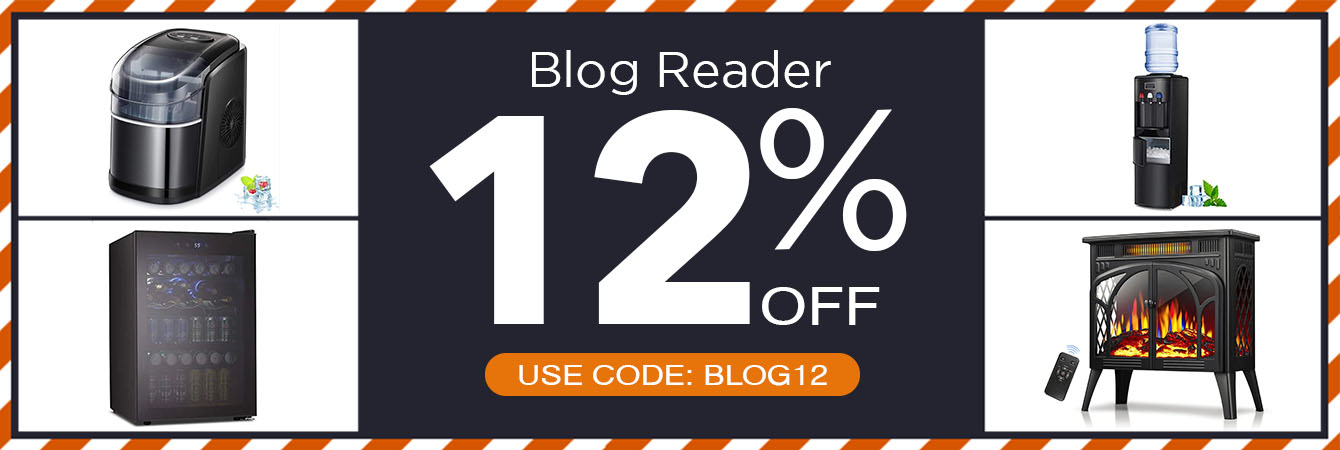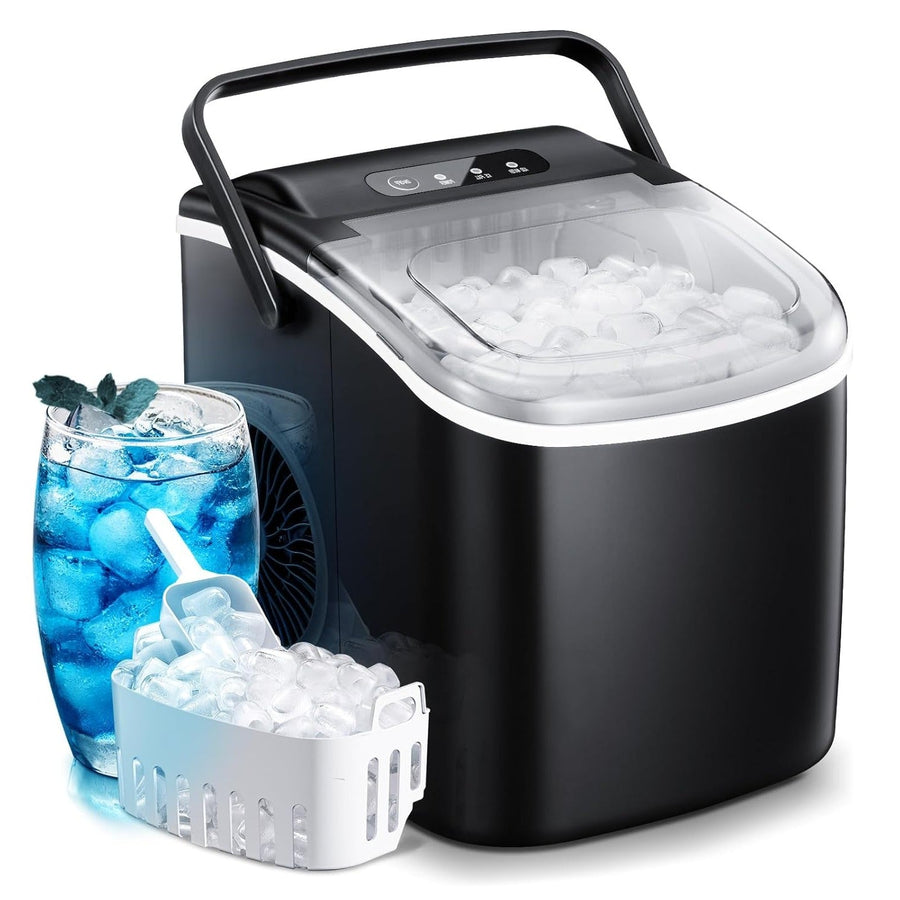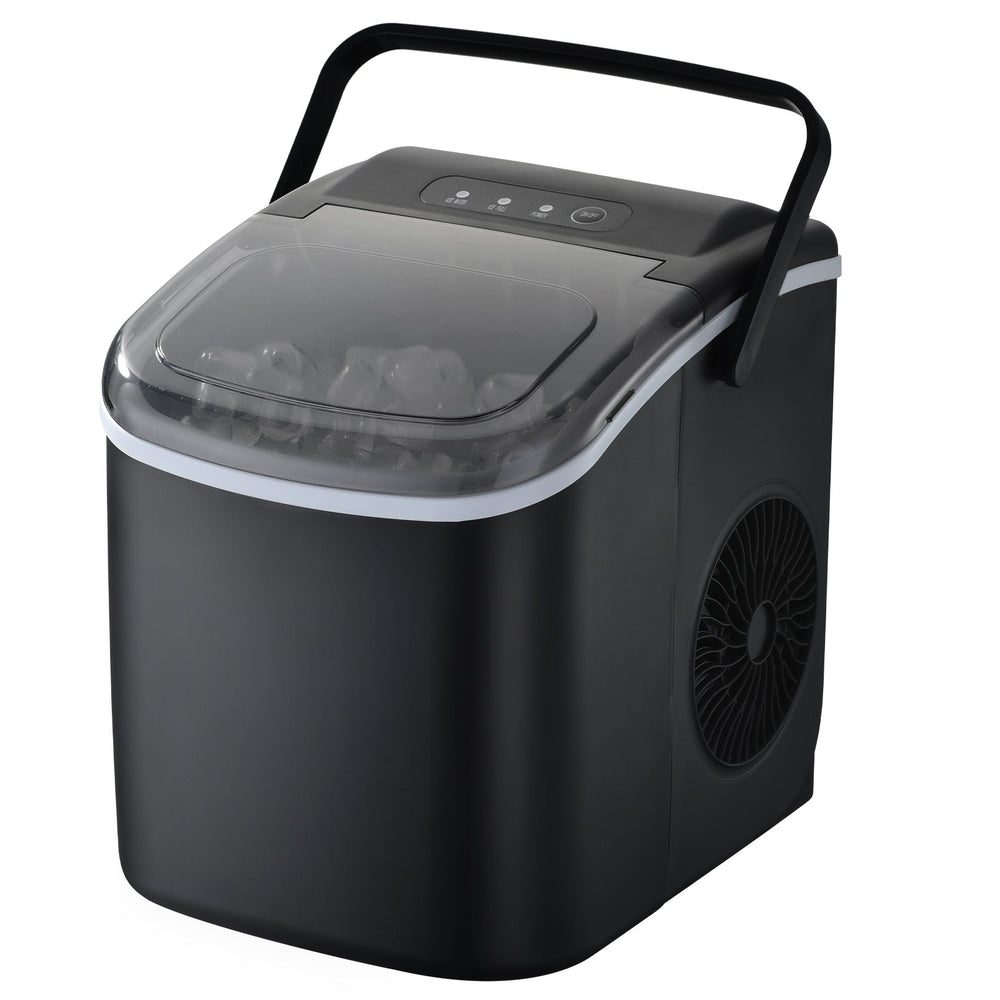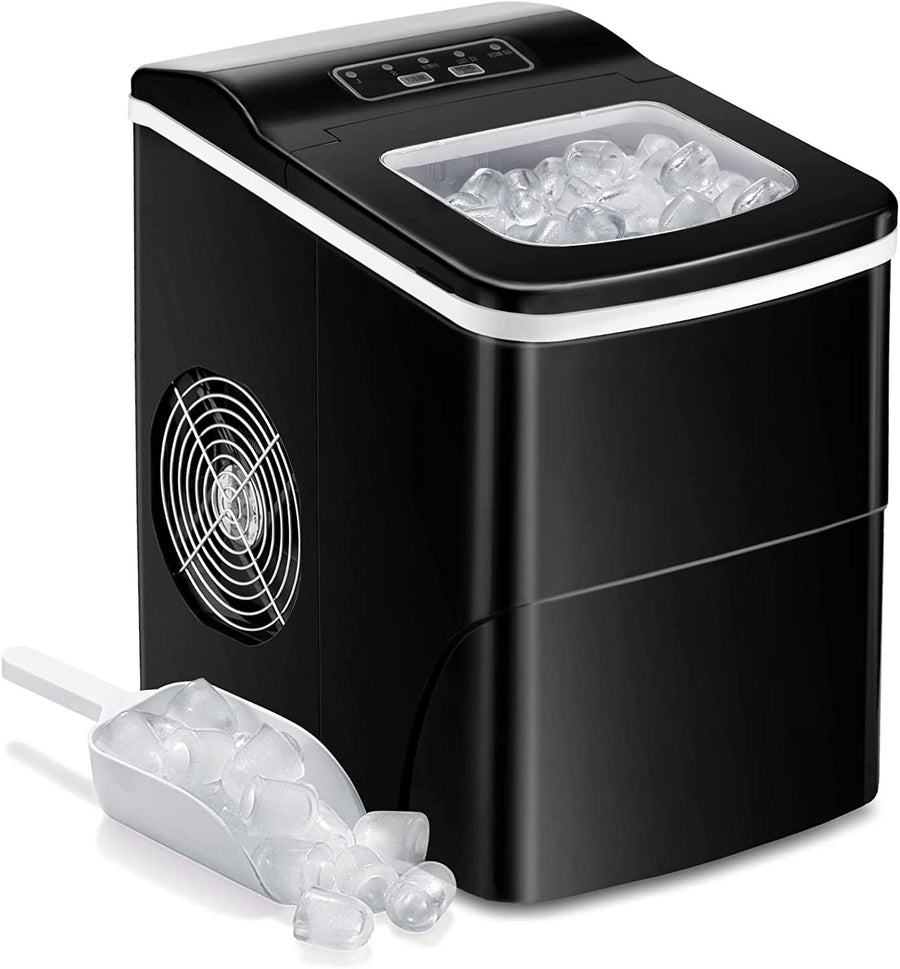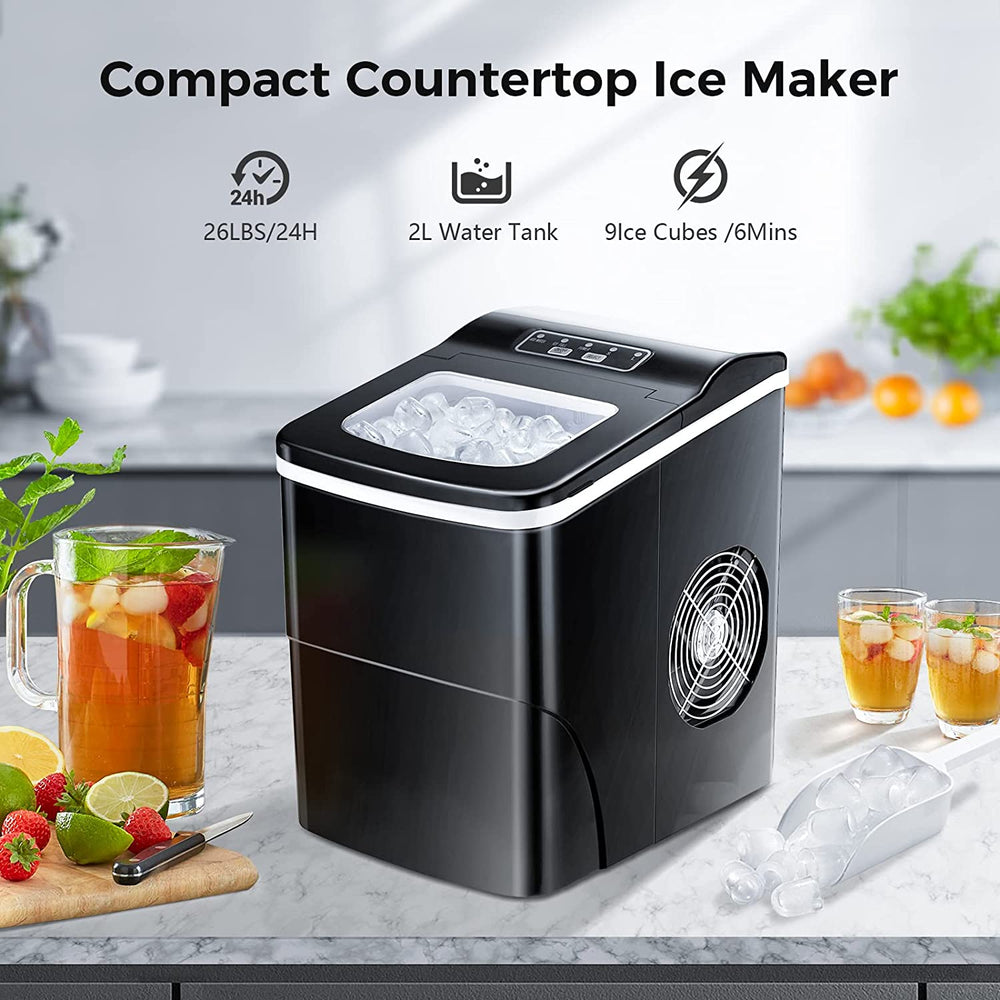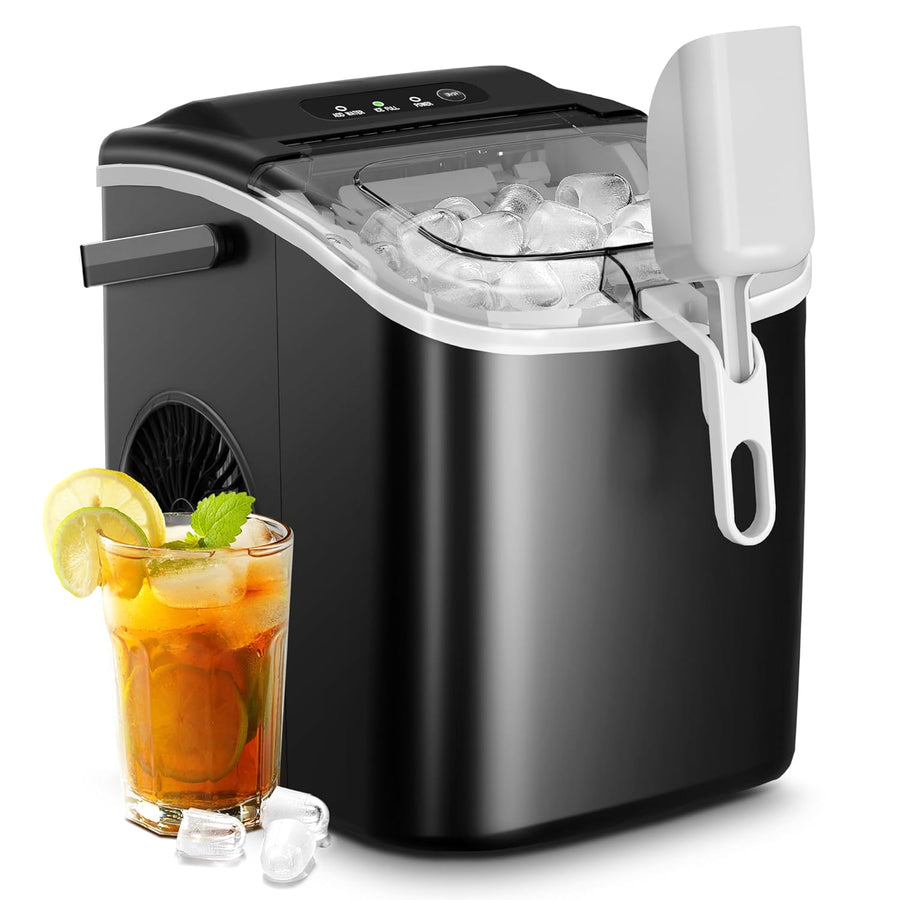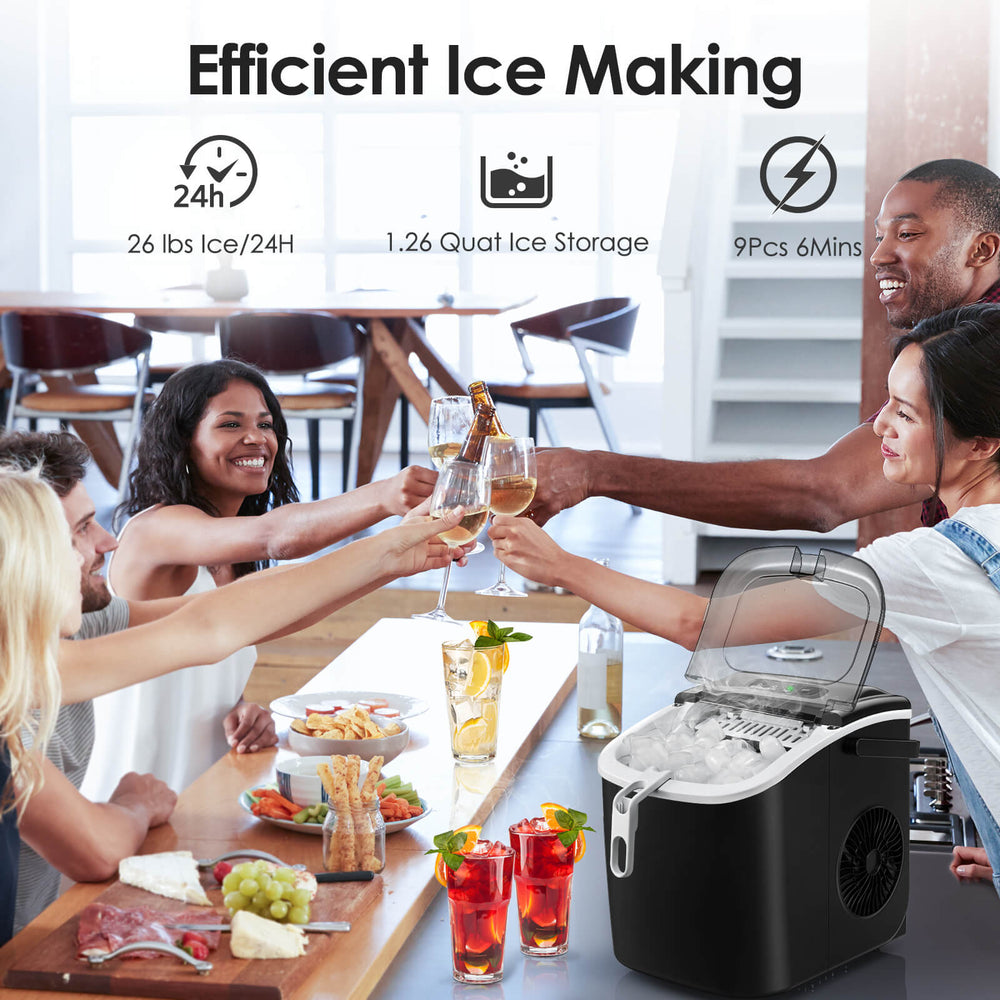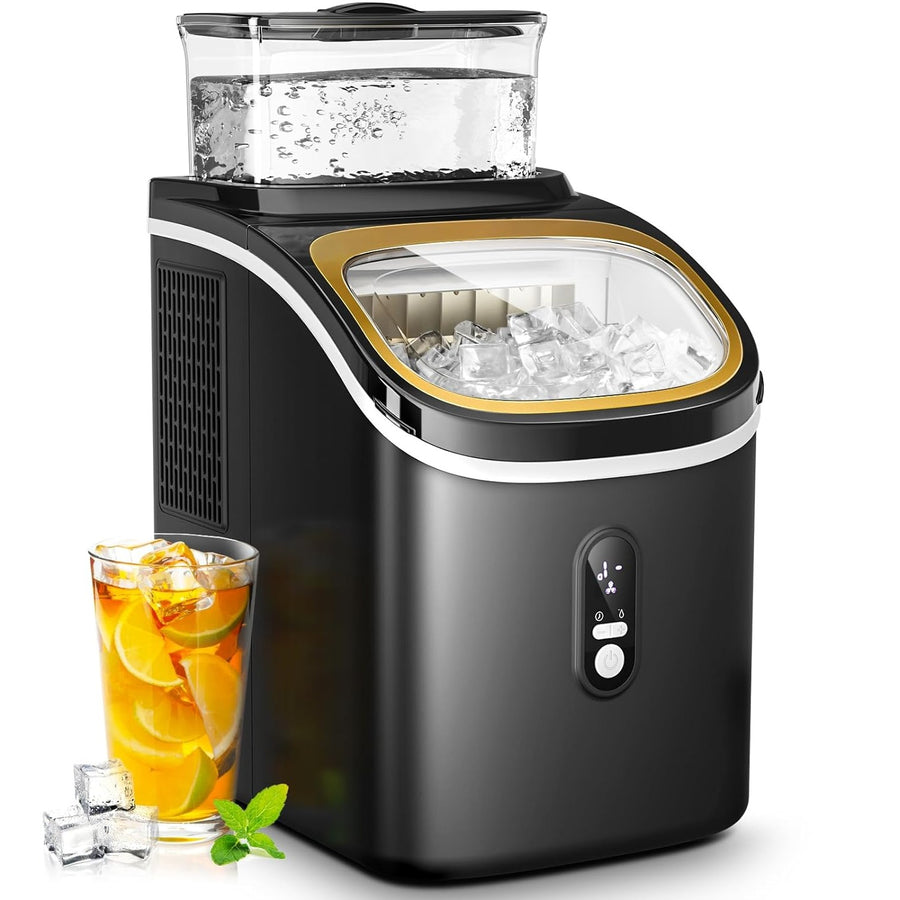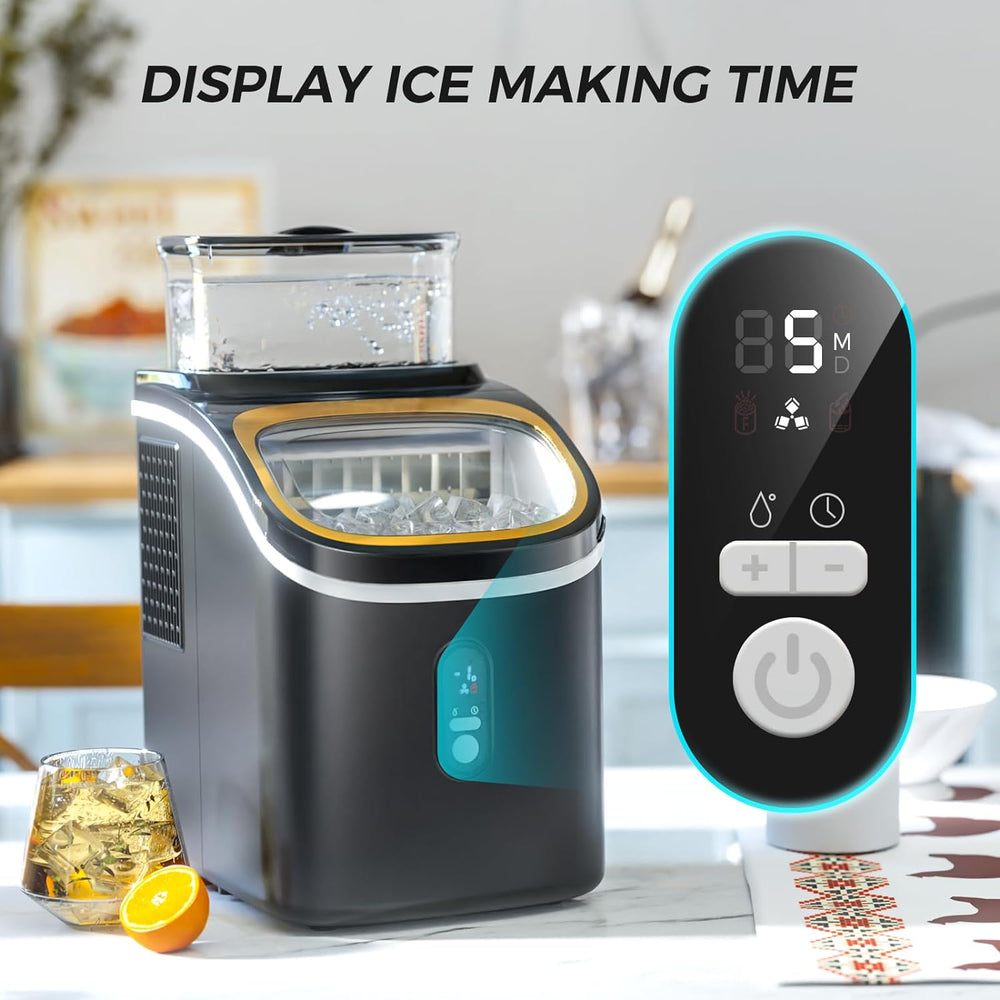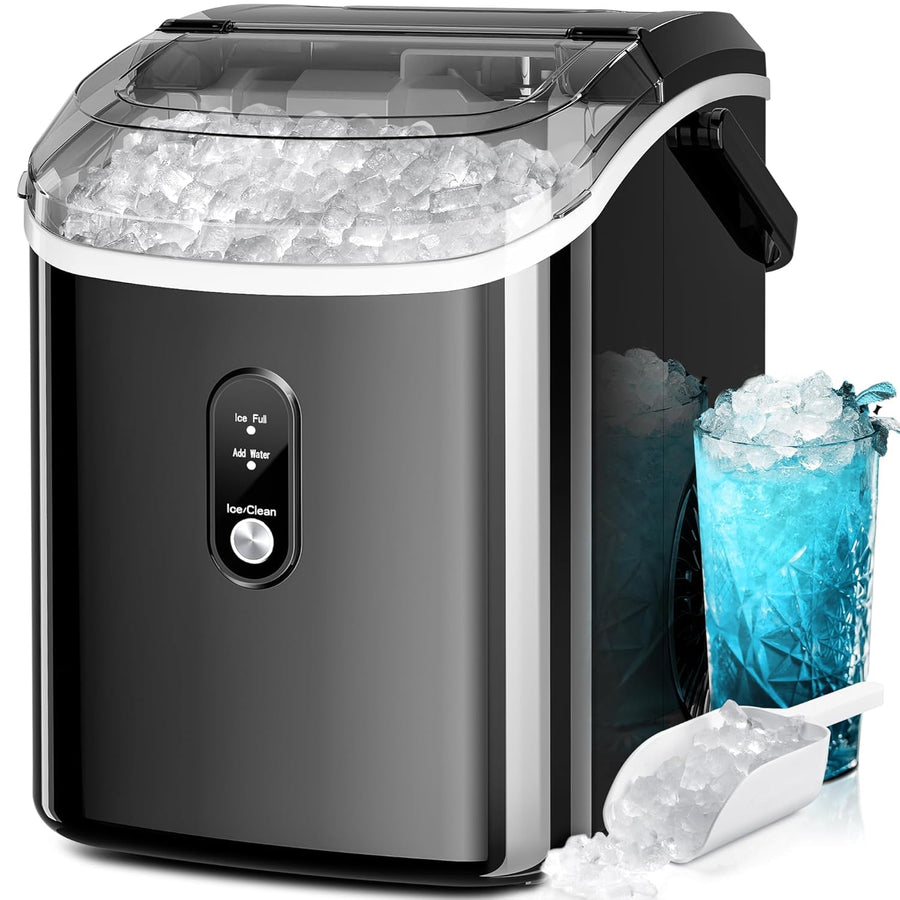How Long A Portable Ice Maker Takes to Make Ice?
Most portable ice makers can make a batch of about 8-10 cubes in 5-12 minutes. However, there are several factors that can affect the speed at which your ice maker produces its icy treats.
6 Factors that Affect Ice Production Time
Most portable ice makers have similar ice production rates, but there will always be variations across brands and models. Below are six factors that affect ice production time.
Ice Makers Types
Ice maker capacity varies from one model to another. Therefore, it's essential to consider how much ice you anticipate needing when shopping for an ice maker.
The total amount of ice the ice maker can produce in a day can be as little as 20 pounds or as much as 35 pounds. Thus, a machine with a high ice production capacity is something to consider if you anticipate using ice regularly.
If a larger capacity is something you desire, keep in mind that the bigger your machine is, the longer it will take to make ice. However, if buying an ice maker for home use, you likely won't need anything too large or unwieldy.
To help you better understand the ice maker types and how they vary according to ice production capacity, below is a list of them and their function.
Built-in or under-the-counter ice makers: These can be integrated into any kitchen's design or theme. They have a higher capacity for producing and storing ice.
Commercial ice machines: This is if you want ice of the quality found in restaurants, with more space for storage and a wider range of ice shapes and sizes.
Outdoor ice makers: These have a more robust insulation capacity and can withstand higher temperatures.
Portable ice makers: These compact appliances can produce a lot of ice throughout the day.
Whatever ice maker type you get, ensure that the size meets your needs and will fit in the space where you plan to keep it.
Ice size
One of the most important considerations is ice size when it comes to ice production speed in a portable ice maker. Typically ice sizes will range from small cubes to large cubes and even ice pellets depending on your ice maker type.
Smaller ice cubes typically freeze faster and produce ice quicker. In contrast, larger ice cubes will take longer and produce fewer cubes in each cycle.
Ice makers that produce ice pellets have even faster freezing times. The smaller pieces are easier and quicker to freeze than larger chunks.
Knowing which size of ice you need for your particular ice-making needs can help you determine the best ice maker.
Water quality
Maintaining water quality is essential to producing the best ice-making performance. Most portable ice makers function with the help of clearance sensors that consider mineral content.
Too much mineral buildup can cause clearance issues and produce lower-quality ice. In addition, you should avoid using hard or tap water for an ice maker as it usually contains higher minerals.
Water with high mineral content can cause scaling on the evaporator plate, slowing ice production time.
Instead, opt for filtered or distilled water with fewer minerals, which is better suited for portable ice makers. In doing so, you can rest assured that your machine will continue making delicious, high-quality cubes!
Water temperature
Maintaining water temperature is essential for an ice maker to produce ice quickly and efficiently.
Generally, the colder the water, the faster it will freeze and create ice cubes. It is because cold water will help the ice maker to produce ice more quickly, while warm water will take more time.
In addition, utilizing cold water ensures that your machine will have a steady supply of cubes for everyone to enjoy!
If you are unsure what water temperate your particular model needs, consult your user manual. Or reach out to a customer service representative for assistance.
Environment
The environment where you keep your portable ice maker can also impact production time. For example, warmer temperatures will cause your unit to work harder and thus take longer to make ice cubes.
It is critical to have the proper environment for an ice maker to produce significant, consistent results. If the climate is too warm, making ice cubes will take considerably longer, and the results may suffer.
While cooler temperatures will help speed up production time significantly. Therefore, it's best to keep your unit in an area with consistent daily temperatures for optimal performance.

Ensuring the environment remains cool enough should always be prioritized to ensure you get the best results from your ice maker.
Clearance
Another factor that affects how your portable ice maker makes ice is clearance. Maintaining clearance for an ice maker is essential to ensure it continues functioning.
Food debris, dirt, dust, and other contaminants can accumulate over time when clearance isn't checked. As a result, it will affect the ice production speed.
To keep your machine producing ice cubes, ensure that you check the clearance space of your ice maker. Clean out any trapped particles. The effort to clear away grime will pay off in consistently-fast ice production.
Additionally, if your unit is placed too close to walls or other objects, the airflow around it could be restricted, interfering with its performance. Make sure there are at least 6 inches (15 cm) of space between the wall and your unit to ensure proper airflow.
FAQs About Portable Ice Makers
How long does filling up a tray of portable ice makers take?
It typically takes 6-18 minutes to fill up a portable ice maker tray, depending on the size of the machine.
However, it can vary as larger portable ice makers may need a consistently longer time to fill their trays with freshly-made ice cubes.
How much ice does a portable ice maker make per day?
Depending on the model, portable ice makers can produce anywhere from 20-36 pounds per day.
This amount can be tailored to your unique environment, as most portable ice makers have adjustable settings to create the exact amount of ice you need.
Does a portable ice maker need a drain line?
Portable ice makers do not require a drain pipe because of how it operates. Instead, as the ice melts, the water drains back into the basin, where the device freezes it once more. Then this process is repeated until you finish all the ice or add more water.
It's a good idea to drain any water sitting in the unit for longer than a day to guarantee that your ice is fresh and high-quality.
Final Thoughts
The time taken by your portable ice maker will depend on several factors, such as - the type of ice maker, the size of the ice, clearance around the machine, water quality, temperature, and the environment.
Be sure to keep these factors in mind when shopping for an ice maker to choose a model that will meet your needs.
Have any questions about portable ice makers? Please leave a comment below!







